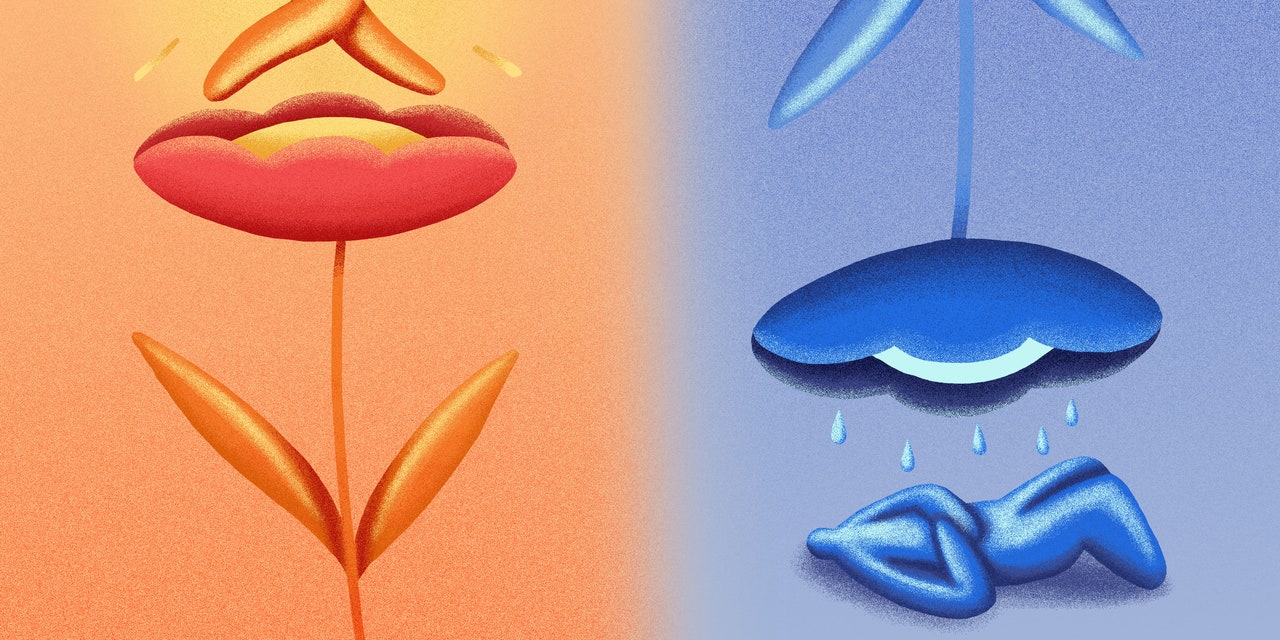It takes people with bipolar I nearly six years, on average, to get an accurate diagnosis after symptoms first crop up.1 The condition is often confused with other mood disorders, like depression, so it’s notoriously tricky for mental health professionals to identify upfront.2 While it manifests differently in everyone, folks with undiagnosed bipolar I may spend long stretches of their lives feeling extreme highs and lows, racing thoughts, and unable to perform simple tasks—with seemingly no explanation.
If that sounds familiar: It makes sense to want to know if you could, in fact, have bipolar I as soon as possible. Some people with the condition say there were red flags that signaled they had the disorder before they had an official diagnosis. (For instance: On TikTok, there are nearly 164 million views on content associated with the hashtag bipolar disorder, with many creators detailing their initial symptoms.)
Here, three people with bipolar I share what warning signs led them to a diagnosis and, ultimately, the right treatment path forward.
“My brain felt so busy that I forgot to eat.”
In 2021, Inga Lukosius, 36, struggled with manic episodes that caused delusions, a common psychosis-related symptom of bipolar I. Lukosius tells SELF that she was “hearing and seeing things,” which led to two assault charges and, eventually, involuntary hospitalization.
Throughout all of this, Lukosius still believed everything was fine. “I thought that nothing was wrong with me,” she says, adding that she was also teeming with energy—so much so that she forewent basic human needs. “I was sleeping three to four hours [and] ate maybe once a day,” she recalls. “My brain felt so busy that I forgot to eat. This went on for six months.”
Lukosius was initially misdiagnosed with depression and prescribed an antidepressant that intensified and prolonged her manic episodes—an unfortunate scenario that happens to some people with bipolar I who are prescribed certain types of medications. “It took me two months to come back to reality,” Lukosius says.
READ RELATED: Salomon Ultra Glide 2 Review: These Trail Shoes Made Me a Max-Cushion Believer
Eventually, Lukosius was able to find a doctor who put her on a treatment plan that worked, including taking a mood stabilizer and antipsychotics. These days, she feels like herself.
“I remember thinking I was being followed.”
Vania Zuniga was 21 and in college when her first bipolar I symptom, paranoia (tied to psychosis), appeared. “I remember thinking that I was being followed, my emails were being hacked, or that people were after me,” she tells SELF, adding that she didn’t realize at the time that this was unusual.
When her friends raised concerns, Zuniga saw a doctor who misdiagnosed her with depression. Without the right treatment, she had a manic episode where she didn’t sleep for several nights at a time, kept awake by racing thoughts. It led to her being hospitalized, which (fortunately) resulted in a bipolar I diagnosis.
Now, at 33, Zuniga works as a nurse practitioner and credits the right medication and regular therapy with keeping her stable. “When you’re going through [bipolar I], you feel like you’re in this mess and you will forever be in these moods,” she says. “Once I bought into the idea that medications do help, it made a huge difference in my life.”
“The anger didn’t fit the situation.”
Kelly Mathews was diagnosed with bipolar I when she was 24, but her symptoms started during her childhood. “My anger and rage didn’t fit the situation,” she says. “Most kids who fall off their bike might be angry or upset a little bit, but they don’t scream and jump up and down, trying to destroy their bike.”






